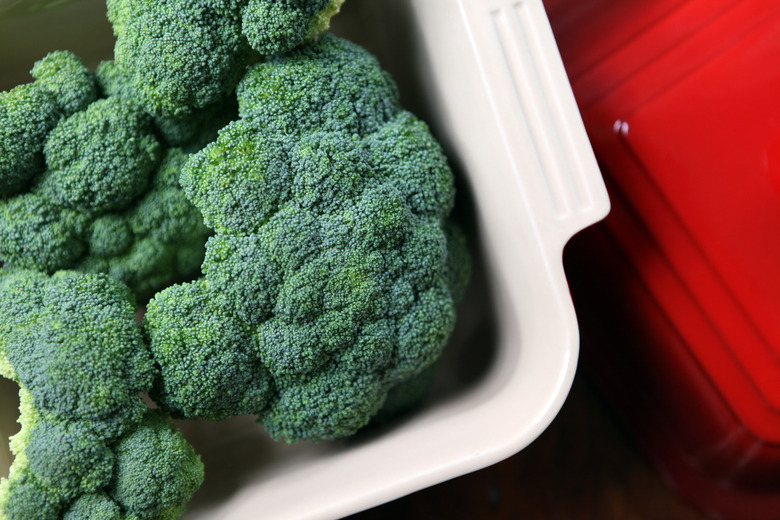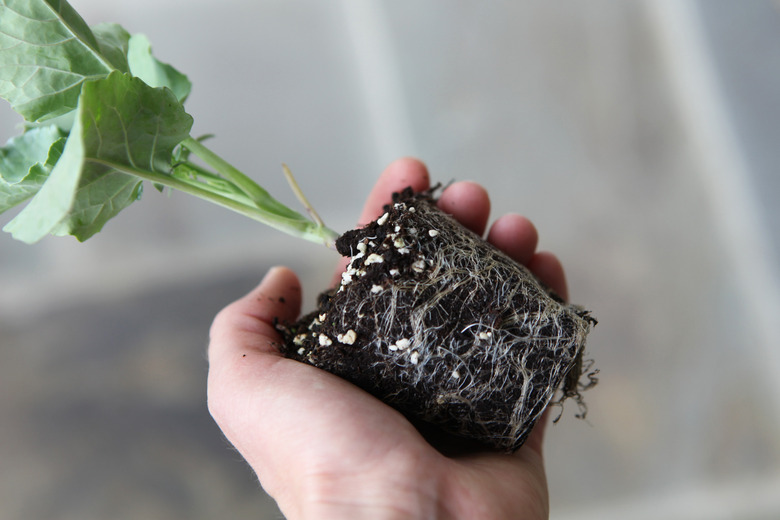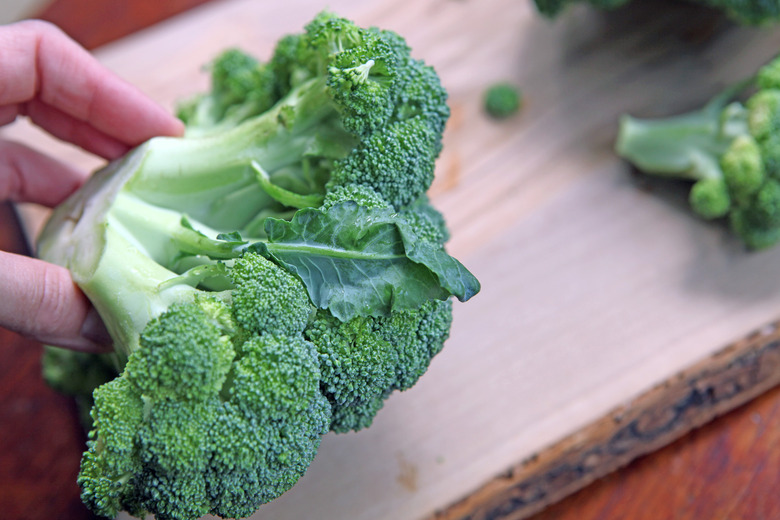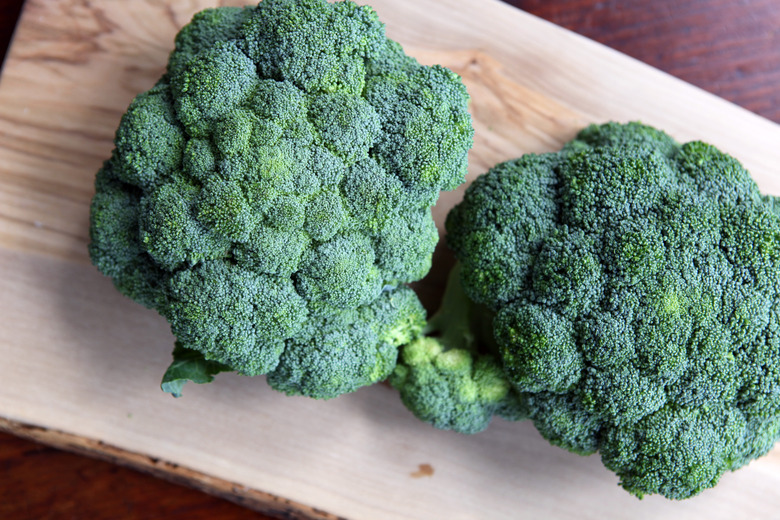Parts Of The Broccoli Plant
Packed with calcium, protein, iron and carotene, broccoli (Brassica oleracea, italica group) is one of the most nutritious members of a group of annual vegetables that all share the botanical name Brassica oleracea, with different variety names. The closely related veggies include cabbage (Brassica oleracea var. capitata), cauliflower (Barssica oleracea var. botrytis) and kale (Brassica oleracea var. viridis). Known as cole-crops, meaning the plant grows on a stalk, broccoli and its relatives thrive during the cool seasons of the year. Growth starts with broccoli roots and runs to its tasty head.
Root System
Root System
The shallow, sinewy root system of the broccoli plant requires nutrient-rich soil to grow, spread and feed the plant. Cultivation more than 2 inches deep around a broccoli plant can injure its spreading roots. Though efficient, broccoli roots are not big enough to feed the plant as it nears maturity, so nutrients stored in the leaves provide secondary nutrition. The roots do not reach down far enough to tolerate drought, so consistent watering is a must.
Leaves and Stalk
Leaves and Stalk
Broccoli plant leaves each have a strong central petiole or stalk that keeps them suspended in the air. Each plant has around 15 to 25 oval-shaped waxy leaves that are gray to blue-green in color and grow along the stalk, which thickens toward the head. Depending on the variety, broccoli leaves can be short and wide or long and thin, with curled or straight edges. Leaves that grow low droop down around the base of the plant. Though many gardeners discard stalks and leaves at harvest, both are edible and nutritious.
Crowning Head
Crowning Head
The broccoli part most commonly eaten is called the curd, or head. Some plants, called calabrese varieties, grow one head, while others have a main head with several small side heads at the base. Made up of small, dense, edible floral shoots, the head is harvested before the florets open. Heads can be green or purple, though green is more commonly cultivated. They stay exposed from the first stages of growth. Full garden sun fuels healthy growth and adds to broccoli's nutritional punch.



